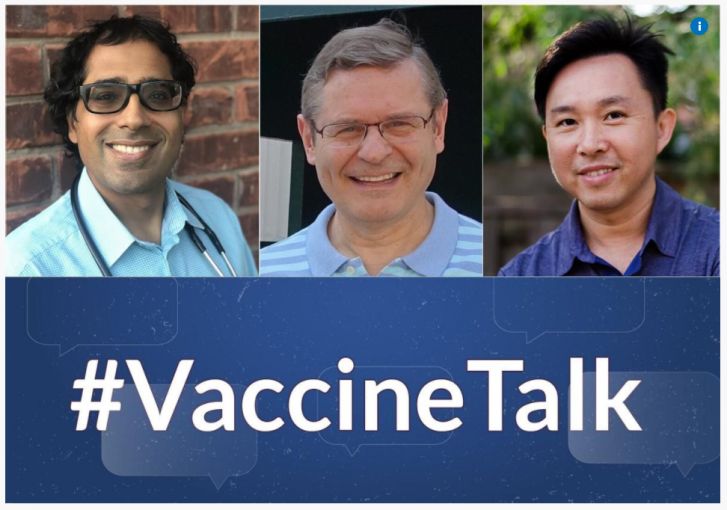Ontario’s vaccine rollout has brought not only frustration, but anguish for many residents, as those in the hardest hit neighbourhoods were not initially prioritized for shots.
And dealing with barriers due to an inequitable health-care system that prioritizes white, English-speaking residents, doesn’t make it easier to access crucial public health information about the vaccine.
That’s why the Star has launched a new initiative aimed at bridging the gap between public health information, and those who need it most. #VaccineTalk is a series of question and answer sessions between Star reporters and trusted public health experts and doctors in multiple languages. The first four videos the Star is launching are in Hindi/Urdu, Spanish, Mandarin and Cantonese.
Each video goes over a series of questions about navigating vaccines in those languages, including what to expect after you receive a vaccine, the differences between the vaccines, everything you need to know about AstraZeneca, and more.
Through the Star’s coverage of the inequities that have been exacerbated due to COVID-19, linked to racism and socioeconomic status, residents have told us the many barriers that exist to receiving the vaccine, and care overall, in Ontario.

It’s stigmatizing to assume that racialized communities are vaccine hesitant — when they are instead facing more barriers to receiving the vaccine, including not knowing where to ask questions, said Quynh Pham, an assistant professor at the Institute of Health Policy, Management and Evaluation at the University of Toronto.
“We know that the communities that are being hit the hardest by the pandemic are not speaking English as a first language, you look at the Peel region, Scarborough, the majority of people there speak English as a second or third language,” she said.
A lot of health information in Ontario is communicated in English first, and it’s left to children of immigrants scrambling to help their families. Even direct translation can miss crucial context, she said.
A concerted campaign to pump out public health information around vaccines and COVID-19 overall should have been a priority from the start within governments, said Pham.
“For these communities that are so diverse, we’ve never had that same diversity of information communication,” said Pham. “So much of that work is left to our communities to do on our own.”
And even as Ontario’s curve is starting to decline in the midst of a devastating third wave that has overwhelmed intensive care units — certain postal codes are still seeing strikingly high mobility data and there are pockets of growth within hot spots like Brampton, according to new data from the Ontario Science Table released last week. These hot spots are where thousands of essential workers live, who have no choice but to work at locations like warehouses and factories, to make ends meet.
Initiatives like Vaccine Hunters have emerged to help Ontarians book their appointments, as residents need to rely on a grassroots, community organization to navigate the mire of vaccination sites that have different requirements. Many are relying on social media, including a Twitter bot, to even catch wind of the possibility of an appointment.

It can be tricky even if you speak English fluently and are savvy enough to navigate dealing with multiple websites on multiple devices. For everyone else booking an appointment and accessing information about the vaccines in the first place can feel impossible.
The province announced last week that 50 per cent of vaccine supply will now go to hot-spot neighbourhoods in an attempt to close the wide vaccine gap that had emerged when richer neighbourhoods with a lower racialized population in the central part of the city had a much higher vaccination rate.
Even if that gap is beginning to shift, stark inequities remain. Vaccine supply has been lower in these regions and far fewer pharmacies had the vaccine available. Brampton only has one hospital, and even with pop-up clinics, there have been limited options for residents to receive shots.
In Brampton, which has a test positivity rate of 22 per cent, over 45 per cent of the population has a mother tongue that is not English or French, according to 2016 census data.
Navigating these elements when you may know how to speak English, but don’t consume information in English, can make it extremely difficult to know even when to line up for a pop-up site, said Dr. Amanpreet Brar, a General Surgery Resident in the Department of Surgery at the University of Toronto.
This is why it’s crucial to bring public health information forward to residents in the language they are most comfortable with, she said.
“It’s about building vaccine competence, and you only build that when you have the access to the information and access to vaccine,” she said. For instance, pop-ups that have been held at Islamic centres and gurdwaras have filled up quickly, she explained.
Article From:The Star
Author:Olivia Bowden

